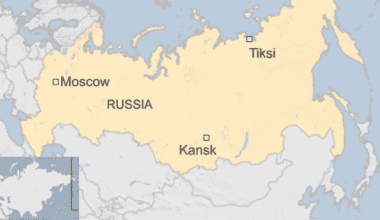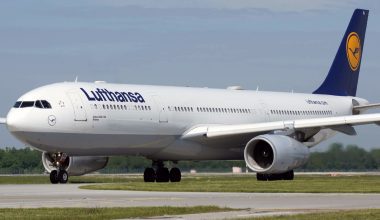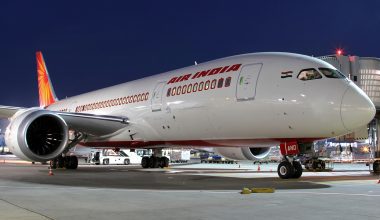Around 7.8 billion passengers will travel in 2036 which is nearly double of the 4 billion air travelers expected to fly this year. The International Air Transport Association (IATA) prediction is based on 3.6% average Compound Annual Growth Rate (CAGR) noted in the release of the latest update to the association’s “20-Year Air Passenger Forecast”.
Alexandre de Juniac, IATA’s Director General and CEO said “All indicators lead to growing demand for global connectivity. The world needs to prepare for a doubling of passengers in the next 20 years. It’s fantastic news for innovation and prosperity, which is driven by air links. It is also a huge challenge for governments and industry to ensure we can successfully meet this essential demand”.
Asia-Pacific region will be the biggest driver of demand which will be the source of more than half the new passengers over the next two decades. The routes to, from and within Asia-Pacific will have an extra 2.1 billion annual passengers by 2036, for an overall market size of 3.5 billion. Its annual average growth rate of 4.6% will be the third-highest, behind Africa and the Middle East.
China will put out of place the United States as the world’s largest aviation market (defined as traffic to, from and within the country) has progressed two years closer since last year’s forecast which will happened about 2022 through the combination of slightly faster Chinese growth and slightly decreased growth in the US. Turkey and Thailand will be in top largest markets list whereas France and Italy will fall in the ranking to 11th and 12th respectively.
Numerous risks and obstacles have been discovered to the forecast. The development of the potential benefits of aviation growth will depend on current levels of trade liberation and visa facilitation being maintained. The benefits of air connectivity will decline as growth could slow to 2.7%, meaning 1.1 billion fewer passenger journeys annually in 2036 if trade protectionism and travel restriction are exhibited. A powerful approach has assumed to reduce its environment impacts, particularly its carbon emissions by the aviation industry.
“No industry has done more to meet its environmental obligations than aviation. Our tough targets to achieve carbon-neutral growth from 2020 and to cut our CO2 emissions to half-2005 levels by 2050 are backed by a comprehensive strategy. Our immediate aims are to work with governments to increase the production of sustainable aviation fuels, and to deliver air traffic management efficiencies, which promise significant emissions savings. And from 2020, a Carbon Offsetting and Reduction Scheme for International Aviation (CORSIA) will play a major role in meeting our carbon-neutral target,” added de Juniac.
Simultaneously, if the step is taken towards liberation increase, annual growth could more than two percentage points faster leading to a tripling in passengers over the next 20 years. The partnership between the aviation industry, communities and governments need to be strengthened to expand and modernize infrastructure. Runways, terminals and ground access to airports will come under increasing strain. Air traffic management requires urgent reform to cut delays, costs and emissions along with innovative solutions to baggage and security processes, cargo handling and other activities will be needed.
“Increasing demand will bring a significant infrastructure challenge. The solution does not lie in more complex processes or building bigger and bigger airports but in harnessing the power of new technology to move activity off-airport, streamline processes and improve efficiency. Through partnerships within the industry and beyond, we are confident that sustainable solutions for continued growth can be found,” said de Juniac.
The five fastest growing markets in terms of annual additional passengers in 2036 compared to 2016 will be China at first place having 921 million new passengers for a total 1.5 billion, US with 401 million new passengers for a total of 1.1 billion, India with 337 million new passengers for a total of 478 million, Indonesia with 235 million new passengers for a total of 355 million and at fifth position Turkey with 119 million new passengers for a total of 196 million.
The fastest growing markets are achieving a compound growth rate of more than 7.2 % per year which mean their market will double in size each decade. a large amount of these markets are in Africa including Sierra Leone, Benin, Mali, Rwanda, Togo, Uganda, Zambia, Senegal, Ethiopia, Ivory Coast, Tanzania, Malawi, Chad, Gambia and Mozambique.
North American region grow by 2.3% annually and in 2036 will carry a total of 1.2 billion passengers with an additional 452 million passengers per year. Europe will grow at 2.3% annually and will add 550 million passengers a year which means the total market will be 1.5 billion passengers. Europe will also grow at 2.3%, and will add an additional 550 million passengers a year. The total market will be 1.5 billion passengers. Latin American markets will grow by 4.2%, serving a total of 757 million passengers, an additional 421 million passengers annually compared to today. The Middle East will grow strongly (5.0%) and will see an extra 322 million passengers a year on routes to, from and within the region by 2036. The total market size will be 517 million passengers. Africa will grow by 5.9%. By 2036 it will see an extra 274 million passengers a year for a total market of 400 million passengers.






